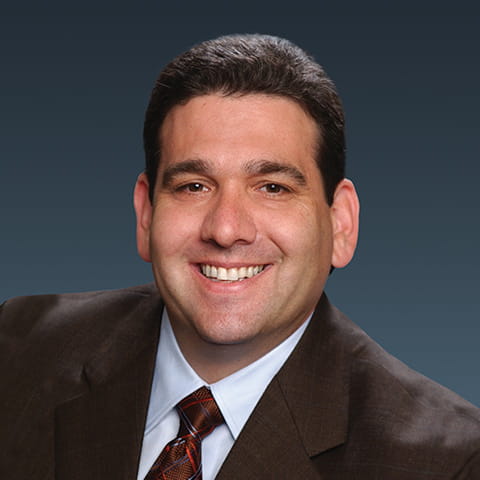REAL ESTATE: PPP loans aren’t free money, but they may be more forgivable than you might think

This content was originally published on Bisnow.com
The Paycheck Protection Program has been a roller coaster ride.
The program, which provides forgivable loans to businesses to help them keep up payroll and make other payments, was originally hailed as a lifeline to millions of Americans as the coronavirus pummeled consumer demand. In the first round of loans, funds were depleted in less than two weeks as businesses scrambled for what appeared to be free money to save their operations.
Now, even though Congress has replenished the funds available and extended the application deadline through Aug. 8, enthusiasm for PPP loans has cooled as accountants and business leaders have realized the complexities of getting their grants forgiven. As the pandemic has deepened, the federal government has consistently revised the rules of the program, but these changes have frustrated borrowers who made decisions based on the original wording of the program.
Now, many business owners who applied for PPP loans are worried that they won’t fall in line with the rules and will be on the hook for all the money they spent. However, owners may have more avenues than they may realize to get their loans forgiven.
“The danger in performing the borrower’s loan forgiveness is potentially leaving money on the table,” said Stephanie O’Rourk, a tax and advisory partner at CohnReznick who co-leads the firm’s Small Business Administration task force, which is dedicated to providing up-to-date guidance for small businesses during the coronavirus pandemic. “Companies are reaching out to me from all over the country because they aren’t sure their accountants understand the rules, and they have trepidation about whether they’re going to get this loan forgiven.”
Navigating the ever-changing guidance from the government can be difficult for someone who does not follow these regulations closely, O’Rourk said. Here are a few of the main areas that PPP recipients need to consider to make sure they receive the most forgiveness possible.
Optimizing employment
The two most significant stipulations of PPP loans are that recipients maintain the same number of full-time equivalent employees as they had before the pandemic and that they use at least 60% of the funds for eligible payroll costs. Unless they can qualify for with a safe harbor exemption, recipients may have their forgiveness reduced for falling below 60% – or below pre-COVID-19 FTE levels. But companies may be able to expand the amount of the loan that is forgivable by carefully scrutinizing whom they are paying and how.
Seasonal and part-time employee hours can be bundled together to make up full-time equivalents. Companies can also examine exactly when they brought on employees to ensure that they are counting the correct number of FTEs from the outset of the pandemic.
Some hospitality, retail, and manufacturing business owners have had trouble bringing employees back to work, either because they have family obligations, safety concerns, or transportation issues or because unemployment benefits may be paying them more than they would earn with a full-time job.
“The government didn’t want to penalize companies that tried to bring their employees back but couldn’t,” said Jeff Bobrosky, a CohnReznick audit and advisory partner who serves on the firm’s SBA task force. “And so if a company makes a good-faith offer of employment and the candidate rejects it, that can also be counted towards FTEs.”
It can sometimes be difficult to track down employees and get them to respond, Bobrosky said, and companies need to make sure they carefully record both the offer and rejection so that in a potential review by the PPP lender or SBA, they have the necessary documentation.
Safe harbors
The government recently defined a few “safe harbor” exemptions that are especially pertinent to real estate owners that received PPP loans.
First, if a borrower can document that government regulations established between March 1 and Dec. 31, 2020 – like a shutdown, shelter-in-place, or safety guidelines to protect employees and customers – won’t allow them to return to the same level of business they experienced prior to Feb. 15, 2020, then even if they reduced their number of FTEs, they can avoid a reduction in loan forgiveness.
“This is a crucial exemption for hotels, restaurants, stores, and bars that might be closed or may have limited customers due to mandated shutdowns and social distancing regulations,” O’Rourk said. “It might not make sense for these businesses to have nearly as many employees as they did before. Rather than keeping employment artificially high for few customers, the company may be able to utilize the funds over a long period of time.”
Bobrosky added that if a company has reduced an employee’s wages by more than 25%, they can restore that salary reduction by the earlier of the date of the loan forgiveness application or Dec. 31, 2020, to avoid being penalized for salary reductions.
Permissible costs
Companies have also struggled to determine whether they should be accounting for costs on a cash or accrual basis and what costs besides payroll are permissible with PPP funds and whether they are also forgivable. Rent and utilities are specifically mentioned as forgivable costs, but beyond those, borrowers enter more of a gray area.
O’Rourk said some of her clients have reached out to ask about Common Area Maintenance, or CAM, charges and real estate taxes that are the obligation of the tenant, which aren’t specifically mentioned.
“Interest payments on loans is a permissible expense for borrowers who have pre-existing debt prior to Feb. 15, 2020, that is not deemed a mortgage. However, that expense is not forgivable: You would have to pay that portion of the loan back to the bank,” O’Rourk said. “The rules have been ever-changing with what is defined as a permissible and forgivable cost, so it takes someone who lives and breathes these regulations to separate what is an allowable, forgivable cost and what is not.”
Eligibility
Other recipients are fretting over whether they were eligible to receive a PPP loan in the first place. SBA is currently reviewing applications for large loans to determine whether the recipients actually needed them.
The PPP was devised to help businesses with fewer than 500 employees, but Congress expanded regulations in the original bill, allowing larger enterprises that would have never normally been able to comply with SBA 7(a) regulations to participate in the program.
“During an SBA review, borrowers could be in a position where they have spent millions of dollars in permissible expenses, brought all their employees back utilizing the PPP funds, and suddenly be on the hook for the entire loan, as the SBA declared they were not eligible to participate in the program in the first place,” O’Rourk said.
The best things that these companies can do, Bobrosky said, is gather documentation from the time that they applied to demonstrate a level of financial need for a PPP loan.
“You do not want to be in a position to have to scramble to find that documentation in a review process,” Bobrosky said. “You should demonstrate that before you applied, you underwent a good-faith effort and determined that, given the economic uncertainty, you needed this loan to support ongoing operations.”
Best practices
There are still many unanswered questions surrounding PPP forgiveness, especially since the process of reviewing forgiveness applications is going to be just as exhausting as the loan application process, O’Rourk said.
“Banks are still building the plane while they’re flying it,” O’Rourk said. “They’re seeing an onslaught of applications.”
The lobbying process around the PPP is still continuing, too, and Bobrosky said it is likely that the government will continue to issue new guidance about forgiveness. The best thing that recipients can do, Bobrosky and O’Rourk agreed, is to keep thorough documentation and records of all the PPP funds that were spent, and to spend them in a way that creates a long-term solution for their business, rather than a short-term bandage.
“Recipients have those 24 weeks to figure out how best to utilize the funds to save their business and get as much loan forgiveness as they can,” O’Rourk said. “You have to make sure you’re strategizing every step of the way.”
This feature was produced in collaboration between the Bisnow Branded Content Studio and CohnReznick. Bisnow news staff was not involved in the production of this content.
Please note that PPP guidance is subject to change along with evolving program rules and governmental regulations. No representation or warranty (express or implied) is made as to the accuracy or completeness of the information contained in this publication, and CohnReznick LLP, its members, employees and agents accept no liability, and disclaim all responsibility, for the consequences of you or anyone else acting, or refraining to act, in reliance on the information contained in this publication or for any decision based on it. This has been prepared for information purposes and general guidance only and does not constitute legal or professional advice. You should not act upon the information contained in this publication without obtaining specific professional advice.

Stephanie O’Rourk

Jeff Bobrosky
Contact
Let’s start a conversation about your company’s strategic goals and vision for the future.
Please fill all required fields*
Please verify your information and check to see if all require fields have been filled in.














